A bit of perspective from Eckhart Tolle
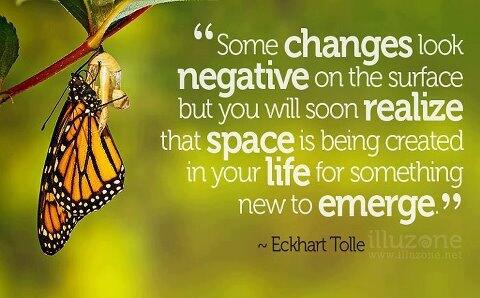

“They were nothing more than people, by themselves. Even paired, any pairing, they would have been nothing more than people by themselves. But all together, they have become the heart and muscles and mind of something perilous and new, something strange and growing and great.
Together, all together, they are the instruments of change.”
― Keri Hulme, The Bone People
The Community currently has members from five countries and across many professions.
Membership has its privileges!
Photo by Håkon Grimstad, Unsplash.com
What is the process of becoming? I experience it as a fluid process: one state changing into another. When we mention the word transformation the butterfly is the first symbol to appear. Is it because the change that the caterpillar goes through is so drastically different than its original form? It is clearly the most noticeable visually. The Oxford dictionary defines transformation as: a thorough or dramatic change in form or appearance. Surely the butterfly is a fine example. Miriam Webster says it differently. The first definition is an act, process, or instance of transforming or being transformed. I prefer this definition even though it does the unsettling thing of using a form of the word itself as part of the definition—always somewhat disconcerting. Perhaps the simplest definition might be transformation is the process of changing. This is the closest to what I mean when I say Transformation is Becoming. In my Model for Radical Resilience transformation is the fourth stage directly following Grow. An illustration of the four stages follows:
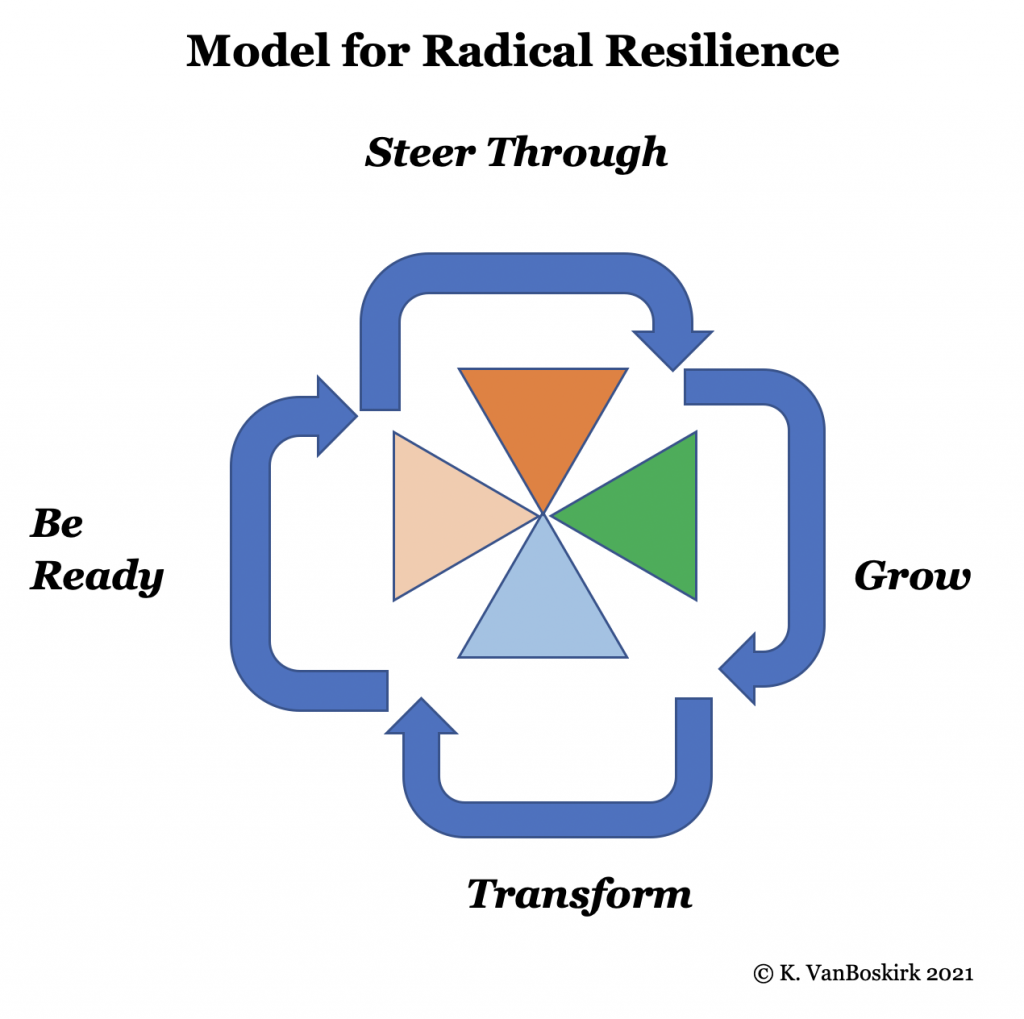
We can see that Transform is a natural flowing out of the phase of Grow.
This model implies our ability as humans to fulfill our potential. Even when we experience adversity we are able to grow and transform possibly, in part, because of the adversity. With the correct mindset and the regular practice of helpful skills, we are able to achieve what is known in the current literature as post-traumatic growth.
I have had many transformations in my life. One of the first was when I must have been 8 or 9. Books had always been special for me. They were what was in my bed instead of dolls as a young child. After I had learned to read in a more serious way around third grade, my mother decided to take me to the library.
I will never forget the first trip to the McCormick Library on Fourth Street in Harrisburg. It was directly across the street from the Susquehanna River, which offered a beautiful view. The library was an imposing building to a young girl—gray stone with a sturdy edifice. It looked official. Yet, for whatever reason, it was not scary like the hospital building that I had visited earlier at age 5.
When we walked through the door of what I remember to be the children’s section, I recall being struck by the fact that these books were all inviting. And they were all for me. The possibilities were endless, and I could have remained there for days. I got my own card as a kind of passport to adventure. It was a treasure trove of people’s thoughts, imaginings, and experiences. I could even bring some of these treasures home with me.
There were walls of books. Cozy chairs were tucked away in inviting nooks. I could sit in these almost cave-like places to page through enticing books with pictures or interesting facts. Maps hung on the walls. A sweet older woman (maybe 35) came up to me to ask if she could help me find something I was looking for. The air had a particular scent that I recognized was like my shelves of books at home. Friends were here, too—like Nancy Drew and the Hardy Boys.

Once I made my choices, I remember being mesmerized as I held these books to my chest, as if my heart could actually decipher them. Walking out of the building I was truly transformed. I could never return to a state of not knowing such a cave of diamonds and emeralds existed for me. The threshold had been crossed. I was different. I had a world of possibility ahead of me. This experience didn’t just grow me. It transformed me by providing a foundation from which I could step to the next level of my growth.
Another example of transformation is the seed. There are probably millions of seed types. Each has its separate DNA code for what it will become. An acorn makes an oak tree not a birch. Within the seed is all of the data necessary to bring about its potential. However, it benefits from nourishment, ideal conditions, and certain actions that can boost its growth and development. So too, we humans have a certain amount of potential. We are always becoming. Our potential is expanding with nourishment, support, and certain actions that grow and transform us.
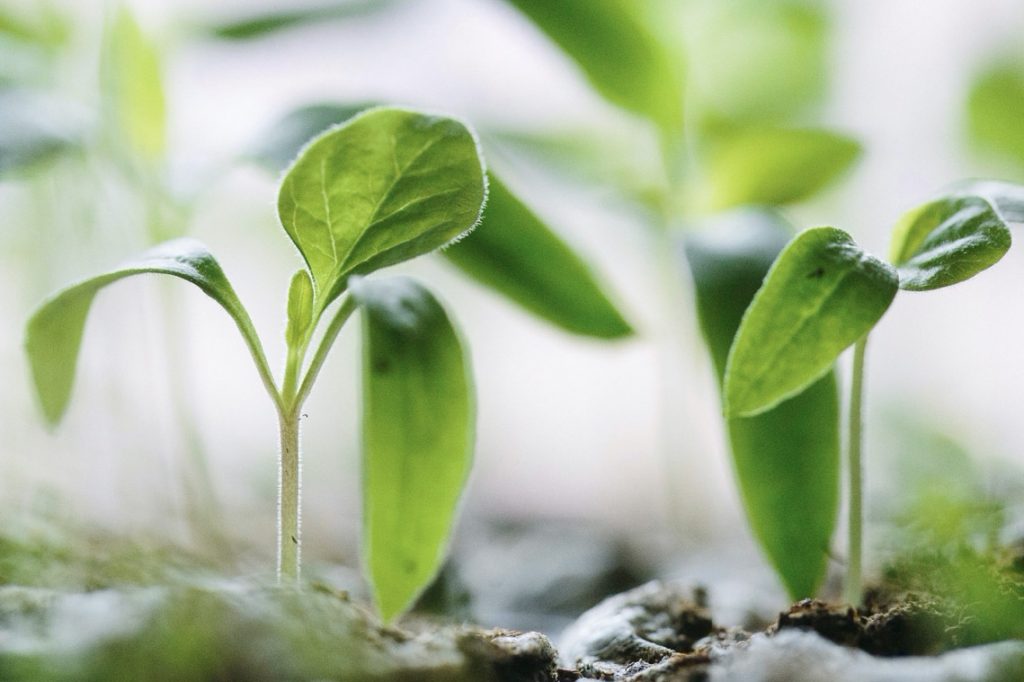
In our “seedling selves” we have a certain reality. With attention to the right conditions, actions, and mindset we expand our potential and grow into all that we can become.
These are several examples of transformation. My library transformation came after a life expanding experience. The seedling example is an example of biological transformation that can be impacted by many other circumstances. There are different kinds of transformations, some coming after we grow through a challenging experience. I believe the importance of transformation is the experience itself, and knowing that it is possible. We start again to experience our lives from a different level. I believe it is within this fourfold process of Be Ready, Steer Through, Grow, and Transform that we can reach the fullest potential in our lives. We become more of who we can be. We start over each time a new challenge comes to us but from a different starting place. We have transformed from the last time we met a challenge and grew through it. With each challenge or adversity, we start from a new level with more resources.
REFERENCES
Oxford Dictionary.com
Scannell, Dr. Alice Updike, (2017). Radical Resilience : When There’s No Going Back To The Way Things Were, A. Beekman Updike, Portland, OR
Miriam Webster.com Dictionary
Author: Kathryn VanBoskirk, LCSW
email: kvb.communityenhancementproject@gmail.com
“Growth is a tender and delicate thing, dependent on the conditions and actions surrounding the growing plant, animal, or person.”
We think of growing as happening naturally. “It is the most natural thing in the world,” we say. However, it is not necessarily easy. I once made the horrible mistake of helping a duckling just beginning to emerge from its shell to break part of the shell away. I didn’t realize that the struggle of breaking through the shell was part of what strengthened its lungs to meet the challenge of regular breathing. Unfortunately, the duckling did not survive. This was an acutely painful lesson in the value of struggle. Even if we don’t yet understand the reason for struggle, it may be serving an important purpose in our future growth. I believe the struggles we go through when we Steer Through our personal storms in life help us to grow.

I think there are three important elements necessary when it comes to growth. We need the right conditions, the right actions, and in humans we need the right mindset.
When I lived on the top of a mountain near Yosemite National Park in California, I learned a lot about the right conditions necessary for duck eggs to hatch. I was given a gift of a pair of ducks for the small pond that was in front of my house. Shortly after I received this gift nature took its course and the female duck had made a nest and was sitting on a number of eggs.
She chose an out of the way place to avoid as many predators as possible, and she feathered her nest with soft warming fibers. She also spent massive amounts of time on the nest to keep her eggs warm. Occasionally she would nudge the eggs to change their position. Later I learned that this was a key skill to keep the eggs developing properly. So, safety, warmth, and a supportive relationship were the conditions necessary for the eggs to develop.
The mother duck had critical actions to carry out in order for her to become a successful mother. She needed perseverance, attention to detail, and she needed to have courage to stay on the nest even with increased vulnerability to predators. Clearly, she also had to be willing to tolerate being out of her normal comfort zone to care for her eggs. If any of these conditions weren’t met or the actions not performed the eggs might not develop.
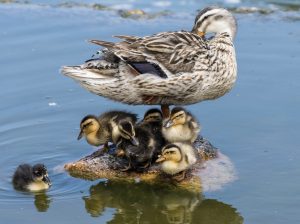
There are lessons here to be learned for our own growth. Safety is one of the conditions which must be present for we humans to move out of our comfort zone to our stretch zone in order to grow. Growth only happens in the stretch zone, not the comfort zone. When we are met with life’s challenges it is possible to meet them by facing them directly and Steering Through them. We discussed this in detail in my first article which talked about the first two phases of my Model of Radical Resilience. This article is focused on the third phase in the model—Grow.
Growth is a tender and delicate thing, dependent on the conditions and actions surrounding the growing plant, animal, or person. The mother duck in my story provided the best conditions and performed the critical actions faithfully and repeatedly in order for her eggs to hatch. She demonstrated perseverance throughout the time on her nest. Perseverance, one of the ten Radical Resilience Skills, is a crucial skill to act on for growth. It is a skill, that when practiced by us, will be more readily available in the hardest of times. The flowers below managed to force their way up from under a heavy rock. They found a path that led them to the light so they could bloom. I believe that perseverance is exactly like this.
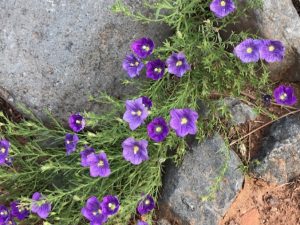
I want to examine another of the skills, Reframing. Our beliefs are our single best point of power. I will draw from Shakespeare’s Hamlet in which it is said: “There is nothing either good or bad but thinking makes it so.”
Having a growth mindset will aid us after going through trauma or adversity.
If we have worked actively to Steer Through the trauma, practicing all the Radical Resilience Skills, we can then reflect on our progress and the rewards of our practice. Carol Dweck, a growth mindset researcher, tells us that with a growth mindset we will focus on what we can learn from our mistakes and value the effort that went into moving forward rather than looking at our failures.
Too often we rely on the talent that we have been born with to carry us through the challenges in life. This is just one of our resources. Learning and effort are two other resources upon which to draw. Perhaps they are the biggest two because they can grow once we decide to expand them.
Look for the third article in a three-part series on building resilience coming soon.
REFERENCES
Dweck, Carol S., (2016), Mindset: The New Psychology of Success, Random House LLC, New York
Scannell, Dr. Alice Updike, (2017). Radical Resilience: When There’s No Going Back to The Way Things Were, A. Beekman Updike, Portland, OR
Author: Kathryn VanBoskirk, LCSW
email: kvb.communityenhancementproject@gmail.com
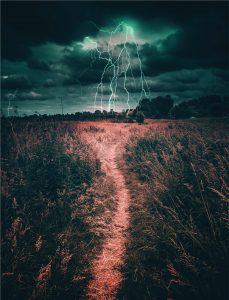
We often think that weathering the storm is the best we can do in times of adversity. I believe that we can do more. Setting our course, and following the path that we set out upon will aid us in Steering Through any hard times that we experience.
Caroline Myss, author and medical intuitive, says, “It is the storms in our life that refine our instincts, not calm waters.” Why might that be so? Perhaps the need to pay extra attention and focus during times of adversity hones our senses in a way that grows us. I believe that when we steer through a difficult time we are actually using our Resilience Muscles day by day. Exercising these, like exercising any muscles make them stronger.
A well-known Japanese novelist, Haruki Murakami makes his belief clear about the transformative power of the storms of our lives. He states, “When you come out of the storm, you won’t be the same person who walked in. That’s what this storm is all about.” It supports the notion that these experiences have a transformative effect. However, I think it is most helpful to have a well-marked path to help us weather the storm which provides the possibility of growing and transforming.
I have devised a Model for Radical Resilience which will help us steer through any storm. Radical Resilience is radical because it does not insist that we bounce back from whatever adversity befalls us. Some events do not allow us to bounce back to our original state. Radical Resilience takes us back to the root of resilience to practice ten different skills necessary to employ throughout the Steering Through process whenever traumatic events happen.
I have chosen the phrase Steer Through because of the visual sense and physicality those words evoke. I can picture sitting in the driver’s seat of the family car steering through an obstacle course of balloons that my brother set out in our backyard when I was twelve. I still feel the steering wheel in my hands pulling and twirling to avoid collision with the yellow and orange balloons. This practice certainly improved my ability to judge distances and increased my skill at maneuvering the car—which, of course, had no power steering. I recognize there were not horrendous consequences should I go off course in this example. However, it was safety that helped me practice so that when the stakes were a lot higher—with bigger consequences—I was more skillful.
The first important stage in my model is Be Ready. Why begin here? Because it acknowledges the fact that life is fraught with adversity. Many of us go through life expecting everything to run smoothly. When this inevitably doesn’t happen, we are taken by surprise and often feel victimized because a traumatic event has occurred. To Be Ready is both a process and an outcome. Being ready means we must practice the skills of resilience daily, honing our abilities and building our brain’s neural pathways to refine these skills and our ways of being.
Being Ready is also a state of mind. It honors the fact that the cost of being alive is to face adversity of all sorts. We are prepared both psychologically, emotionally, and spiritually when challenges that do rock us come along.
The second phase of my model is Steer Through. When something occurs that challenges us, we need to steer through a path that helps us do the best we can in getting through that challenge. We need to avoid the inevitable obstacles that appear that help keep us flattened out or shove us further down. We need to have built up the skills of Radical Resilience sufficiently enough to have them support us in this process—even help us grow.
About the same time I was learning to drive a car in my back yard, I was learning to navigate a cabin cruiser my family shared with four other families. It was docked near the Chesapeake Bay in Maryland. On one of our weekend trips I was asked by my dad to steer the boat through a fairly narrow channel to the Atlantic Ocean. There were far bigger boats coming through the channel from the opposite direction. It was a challenge that lasted for an hour or more of very intense maneuvering. I learned a lot about actual steering through to arrive at a goal. Sometimes we think about riding out a storm. However, I think it is always essential to have our hands on the steering wheel.
One of the things I learned about Steering Through that channel was when a huge boat went by me, after it passed, I needed to immediately turn into the wake of the boat to avoid being rolled side- to-side. This action actually shortens the time that the boat is affected by the wake. I believe this is a metaphor for exactly what we need to do when an emotional storm or physical challenge comes into our lives. We need to face it directly and head right into the storm. I realize it is counterintuitive; however, it may keep us from being rolled over by it. Facing it directly and heading right in may also shorten the time that we are affected by the challenges.
After my successful captaining of our family boat through the daunting experience of the narrow channel, I was aware of my growth. Even though I was not taller, I felt taller within myself. I was much more confident—and relieved! One more valuable lesson I learned when steering the boat was that I needed to not be watching my wake! If I drove forward in an expert way, the wake would take care of itself. This is a helpful reminder to not be captured by our past. It will not help us to Steer Through the current situation.
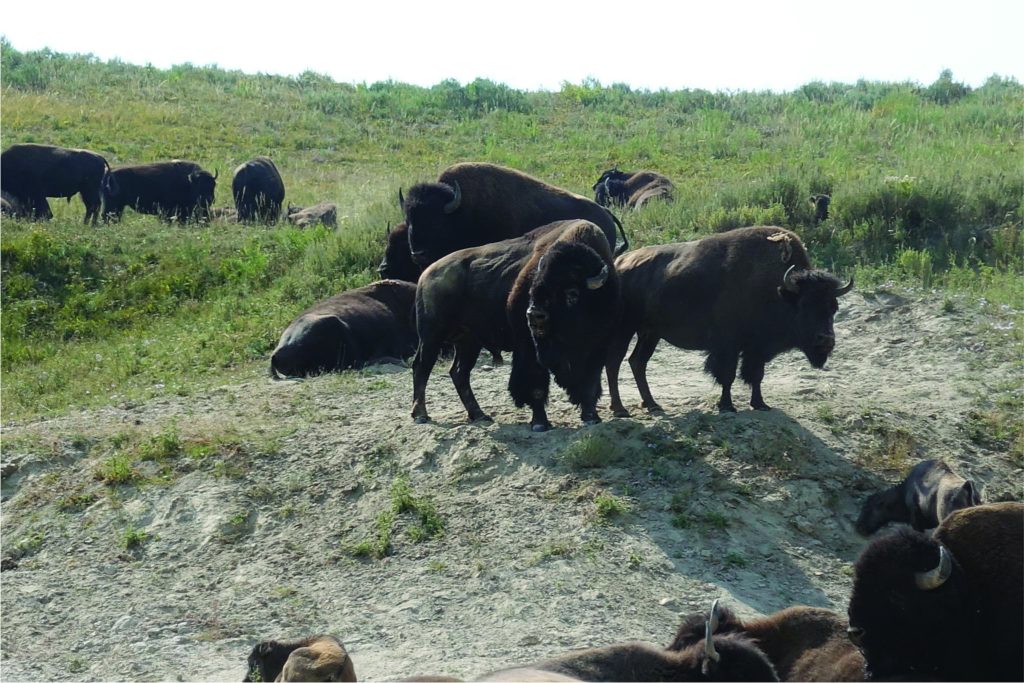
The Native Americans revere the buffalo because when they sense a storm is coming, the buffalo run directly into it. While it may seem counterintuitive, these animals instinctually know that running into the storm gets them through it in the quickest way possible. Cows, on the other hand, tend to run away from the storm. This actually often results in their suffering for a longer period of time. While to some extent we may be compared to herd animals, we are also individuals. Perhaps, in some instances, we might be able to outrun the weather— but we are not able to outrun the adversities in our lives. If we have been practicing the Ten Skills of Radical Resilience, we will be more ready to navigate whatever storm hits us by facing it directly. With these skills more honed in our behavior and with these skill pathways more evident in our neural networks we become more resilient.
These Ten Radical Resilience Skills support our journey of Steering Through the storms of our lives:
• MINDFULNESS
•REFRAMING
•COURAGE
•PERSEVERANCE
•REALISTIC OPTIMISM
•CREATIVITY
•PHYSICAL ACTIVITY
•FLEXIBILITY
•HOPE
•SPIRITUALITY
Keep tuned in for the second article on The Struggle to Grow coming soon.
REFERENCE
Scannell, Dr. Alice Updike, (2017). Radical Resilience : When There’s No Going Back To The Way Things Were, A. Beekman Updike, Portland, OR
Author: Kathryn VanBoskirk, LCSW
kvb.communityenhancementproject@gmail.com
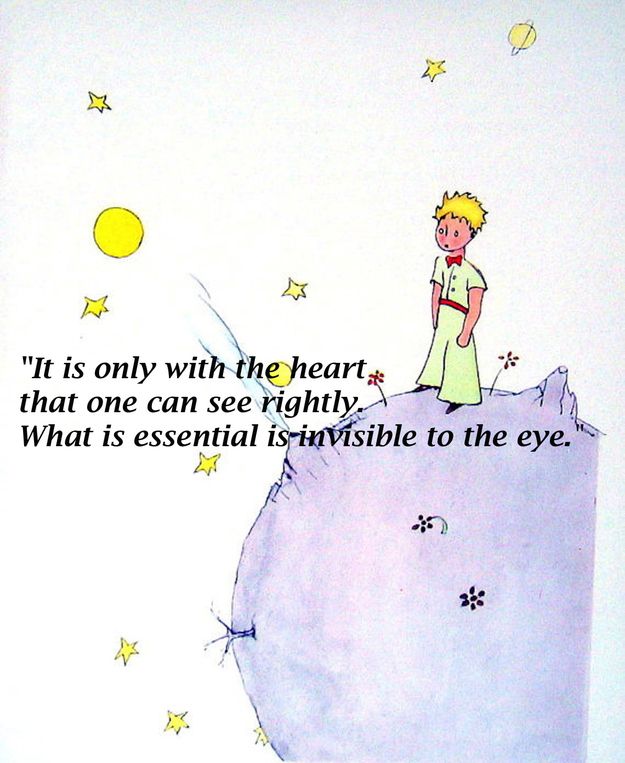


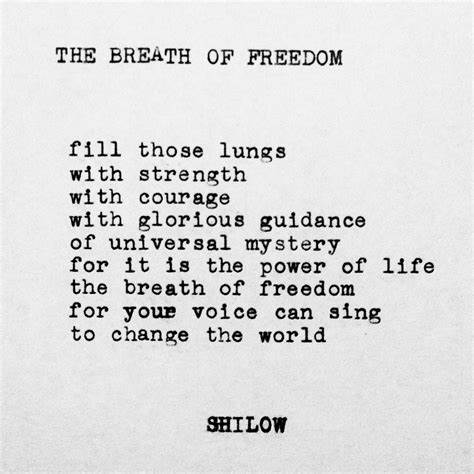

“They were nothing more than people, by themselves. Even paired, any pairing, they would have been nothing more than people by themselves. But all together, they have become the heart and muscles and mind of something perilous and new, something strange and growing and great.
Together, all together, they are the instruments of change.”
― Keri Hulme, The Bone People
https://www.psychologytoday.com/us/blog/beautiful-minds/201112/the-will-and-ways-hope#_=_
https://www.thevoiceplay.com/news/2019/8/9/new-video-bridge-over-troubled-water
Isn’t it lovely….